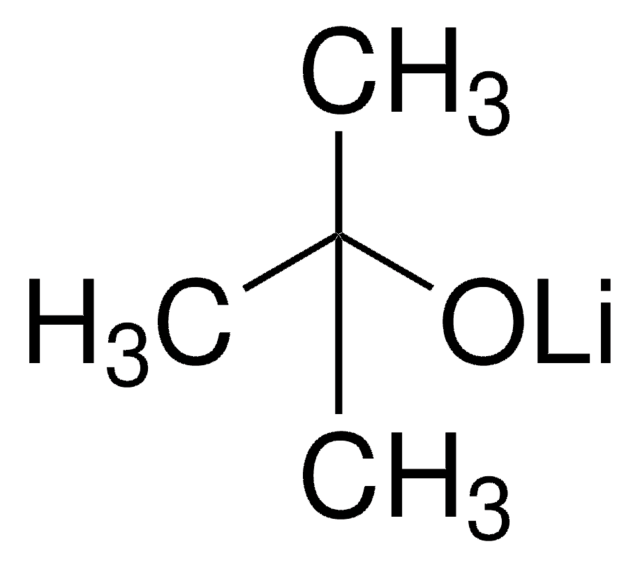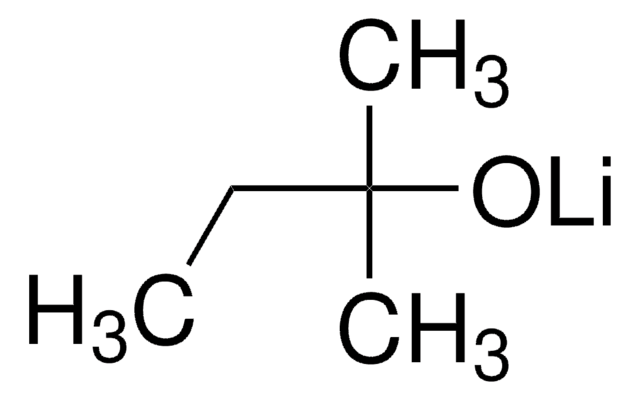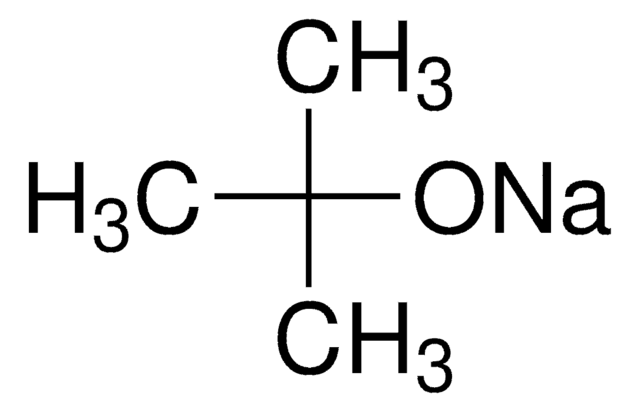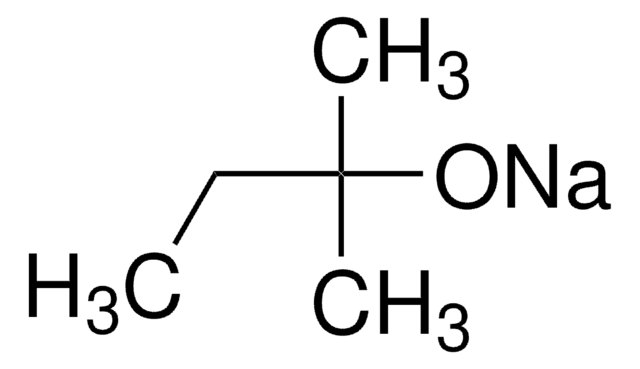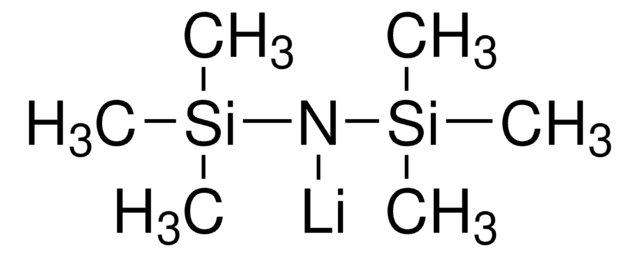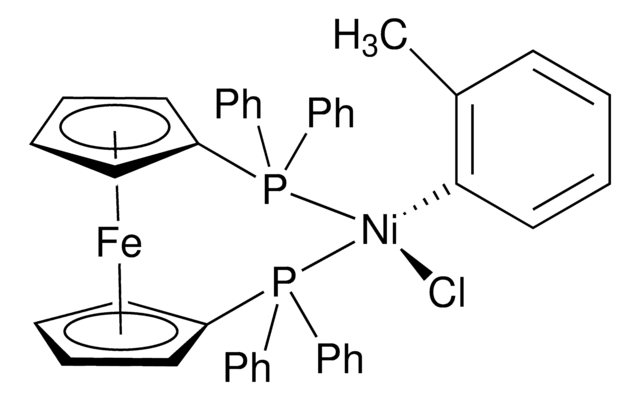398195
Lithium tert-butoxide solution
1.0 M in THF
Synonym(s):
tert-Butoxylithium, Lithium 2-methylpropan-2-olate, Lithium t-butoxide, Lithium tert-butylate, Lithium salt of tert-Butyl alcohol
About This Item
Recommended Products
form
liquid
concentration
1.0 M in THF
bp
67 °C
density
0.888 g/mL at 25 °C
SMILES string
[Li+].CC(C)(C)[O-]
InChI
1S/C4H9O.Li/c1-4(2,3)5;/h1-3H3;/q-1;+1
InChI key
LZWQNOHZMQIFBX-UHFFFAOYSA-N
Looking for similar products? Visit Product Comparison Guide
Application
It can be used:
- For the synthesis of lithium modified silica nano-particles for conductive gel electrolytes.
- As a catalyst for ring-opening polymerization of lactides.
- As a lithium precursor for the synthesis of LiV3O8 nanoparticles by flame spray pyrolysis.
Signal Word
Danger
Hazard Statements
Precautionary Statements
Hazard Classifications
Acute Tox. 4 Oral - Carc. 2 - Eye Dam. 1 - Flam. Liq. 2 - Self-heat. 1 - Skin Corr. 1B - STOT SE 3
Target Organs
Central nervous system, Respiratory system
Supplementary Hazards
Storage Class Code
4.2 - Pyrophoric and self-heating hazardous materials
WGK
WGK 3
Flash Point(F)
-2.2 °F - closed cup
Flash Point(C)
-19 °C - closed cup
Personal Protective Equipment
Choose from one of the most recent versions:
Already Own This Product?
Find documentation for the products that you have recently purchased in the Document Library.
Customers Also Viewed
Articles
Nanomaterials are considered a route to the innovations required for large-scale implementation of renewable energy technologies in society to make our life sustainable.
Our team of scientists has experience in all areas of research including Life Science, Material Science, Chemical Synthesis, Chromatography, Analytical and many others.
Contact Technical Service